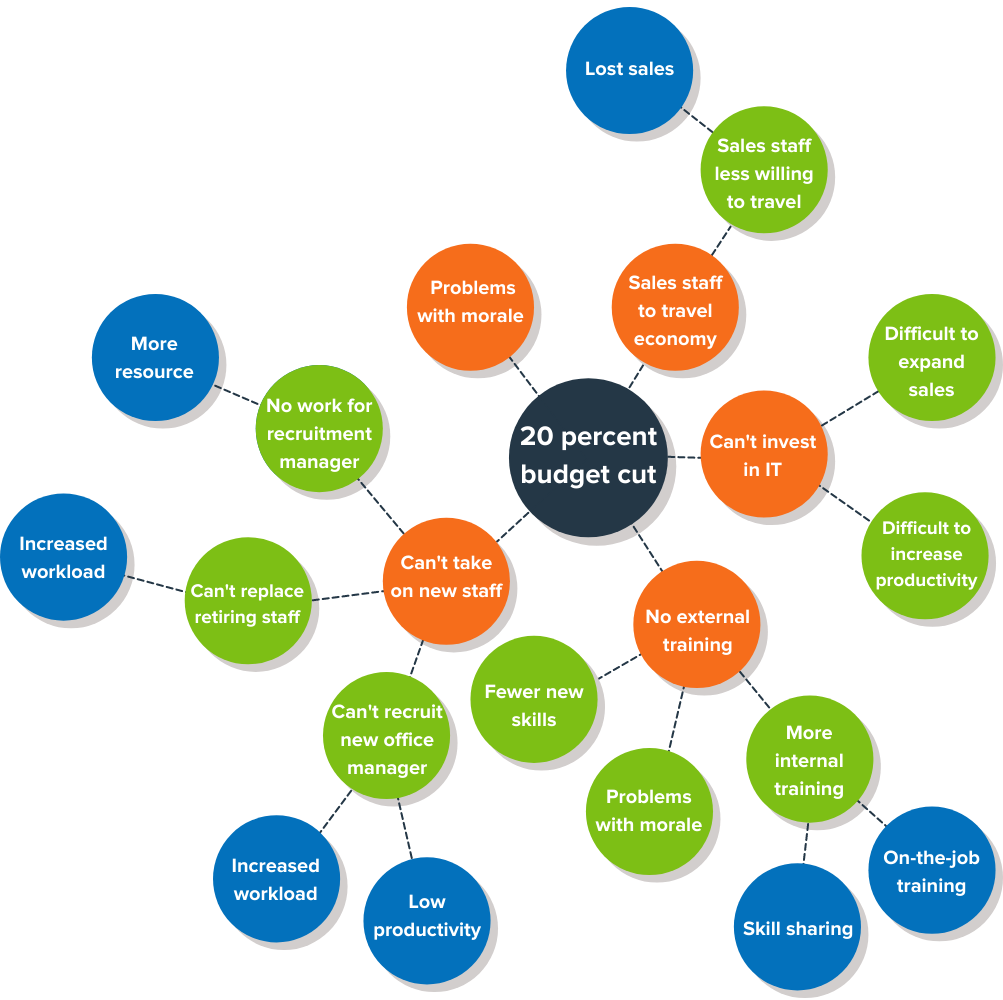The Futures Wheel
Identifying Consequences of a Change

© iStockphoto
vestica
Get an overview of what might happen as a result of your decision.
If you've ever needed to explore the full impact of a proposed change, you'll know how hard it can be to identify all possible outcomes.
In situations like these, many people panic, and list the first consequences that they can think of, resulting in a list that's shallow, incomplete, and tricky to analyze.
This is where the Futures Wheel can help. This visual tool gives you a structured way of brainstorming the direct and indirect consequences of a decision, event, or trend. Find out more in this article and infographic.
What Is the Futures Wheel?
The Futures Wheel (see figure 1, below) was created by Jerome Glenn in 1972. Glenn has since become a recognized expert and speaker on Future Studies.
Figure 1 – The Futures Wheel

From Glenn, Jerome C., "Futurizing Teaching vs Futures Course," Social Science Record, Syracuse University, Volume IX, No. 3 Spring 1972. Reproduced with permission from Jerome Glenn.
Glenn originally created the Futures Wheel to identify the potential consequences of trends and events, but you can also use it in decision making (to choose between options) and in change management (to identify the consequences of change). The tool is especially useful during the brainstorming stage of Impact Analysis.
How to Use the Futures Wheel
Step 1: Identify the Change
Write the change that you need to consider in the center of a piece of paper, or on a flipchart. This could be an event, trend, problem, or possible solution.
Step 2: Identify Direct, First-Order Consequences
Now, brainstorm possible direct consequences of that change. Write each consequence in a circle, and connect it from the central idea with an arrow. These are "first-order" consequences.
Step 3: Identify Indirect, Second-Order Consequences
You now need to brainstorm all the possible "second-order" consequences of each of the first-order (direct) consequences that you wrote down in Step 2, and add them to your diagram in the same way.
Then, repeat this by identifying the third-order consequences, fourth-order consequences, and so on.
Tip 1:
You may find it useful to color-code each "level" of the wheel, as we have in figure 1, above. This makes it easier to prioritize and analyze consequences once you've completed your brainstorming.
Tip 2:
Remember that consequences are not necessarily negative.
Step 4: Analyze Implications
Once you've completed all of the levels of the Futures Wheel, you'll have a clear picture of the possible direct and indirect consequences resulting from the change. List these.
Step 5: Identify Actions
Where the possible consequences that you've identified are negative, think about how you'll manage them (our article on Risk Analysis gives some useful pointers). Where consequences are positive, think about what you'll do to take full advantage of them.
A Futures Wheel Example
Judith's departmental budget is going to be cut by 20 percent in six weeks. She gets her managers together, and completes a Futures Wheel (see figure 2) to identify all of the possible consequences.
Figure 2 – Judith's Futures Wheel

Judith can now see that cutting staff will have a significant impact on her team. If she's going to work around her budget shortfall, she knows that she'll need to try every other option first. Trimming staff will be a last resort.
She can also see that low motivation and low productivity could be indirect consequences of this budget cut. So she needs to be ready to rebuild team morale, and to help people be more productive. She may also find it hard to increase sales volumes, so she needs to manage expectations accordingly.
There are also some positive consequences from the budget cut – there will be more opportunities for sharing skills and for on-the-job training in the team.
Infographic
Click on the image below to see our infographic based on this article:
Key Points
The Futures Wheel is a simple, practical tool that helps you brainstorm the direct and indirect consequences of a decision, event, or trend.
To use the Futures Wheel, first identify what's changing. Then, enter each possible direct consequence of that change in a circle, and connect it from the central circle with an arrow.
Then, repeat this by identifying the second-order consequences, third-order consequences, fourth-order consequences, and so on.
Once you're finished, you'll have a visual map that lays out all of the implications of the problem or event, allowing you to manage the situation appropriately.
This site teaches you the skills you need for a happy and successful career; and this is just one of many tools and resources that you'll find here at Mind Tools. Subscribe to our free newsletter, or join the Mind Tools Club and really supercharge your career!







We're glad that you found it helpful. There are many great resources on the site, all geared towards helping people build a great career.
Yolandé
Mind Tools Team
Glad you found value in the article.
Bill
Mind Tools Team